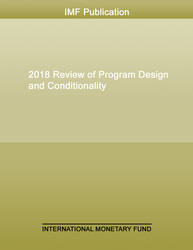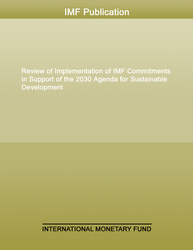
Increasing Resilience to Large and Volatile Capital Flows—The Role of Macroprudential Policies
Capital flows can deliver substantial benefits for countries, but also have the potential to contribute to a buildup of systemic financial risk. Benefits, such as enhanced investment and consumption smoothing, tend to be greater for countries whose financial and institutional development enables them to intermediate capital flows safely.
Post-crisis reforms, including the development of macroprudential policies (MPPs), are helping to strengthen the resilience of financial systems including to shocks from capital flows. The Basel III process has improved the quality and level of capital, reduced leverage, and increased liquid asset holdings in financial systems. Drawing on and complementing such international reforms at the national level, robust macroprudential policy frameworks focused on mitigating systemic risk can improve the capacity of a financial system to safely intermediate cross-border flows.
Macroprudential frameworks can play an important role over the capital flow cycle, and help members harness the benefits of capital flows.
Introducing macroprudential measures (MPMs) preemptively can increase the resilience of the financial system to aggregate shocks, including those arising from capital inflows, and can contain the build-up of systemic vulnerabilities over time, even when such measures are not designed to limit capital flows.
While the risks from capital outflows should be handled primarily by macroeconomic policies, a relaxation of MPMs may assist, as long as buffers are in place, in countering financial stresses from outflows.
Capital flow liberalization should be supported by broad efforts to strengthen prudential regulation and supervision, including macroprudential policy frameworks.
The Fund has two frameworks to help ensure that its advice on MPPs and policies related to capital flows is consistent and tailored to country circumstances. The frameworks (the Macroprudential framework and the Institutional View on capital flows) are consistent in terms of key principles, including avoiding using MPMs and capital flow management measures (CFMs) as a substitute for necessary macroeconomic adjustment.
The appropriate classification of measures is important to ensure targeted advice consistent with the two frameworks. The conceptual framework for the assessment of measures laid out in this paper will assist staff in properly identifying MPMs and measures that are designed to limit capital flows and to reduce systemic financial risk stemming from such flows (CFM/MPMs), and thereby ensure the appropriate application of the Fund’s frameworks, so that staff policy advice is consistent and well targeted. The Fund will continue to develop and share expertise in using MPMs, and integrate these findings into its surveillance and technical assistance, which should contribute to building international understanding and experience on these issues.
Publication date: May 2017
ISBN: 9781498346696
$0.00
Add to Cart by clicking price of the language and format you'd like to purchase
Available Languages and Formats
| English |
Prices in red indicate formats that are not yet available but are forthcoming.
Topics covered in this book
This title contains information about the following subjects.
Click on a subject if you would like to see other titles with the same subjects.
capital flow , resilience , asset price , capital inflow , inflow
Summary
Copyright © 2010 - 2025
Powered by:
AIDC



